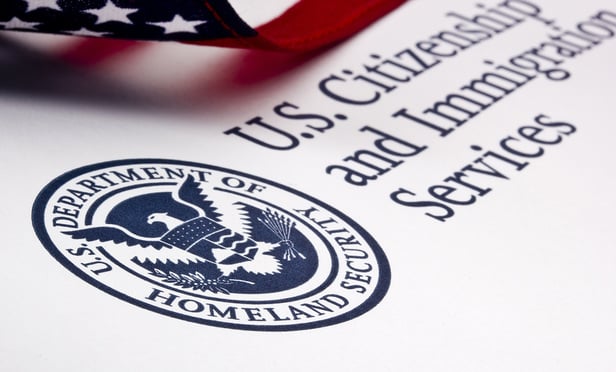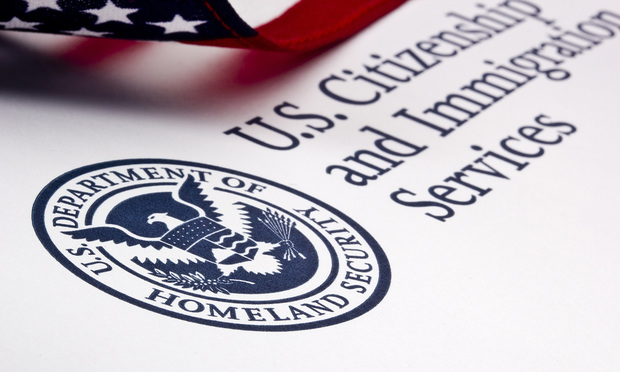Kate Kalmykov

January 29, 2016 | New Jersey Law Journal
Employment Eligibility: Form I-9 and the Verification RequirementsReviewing the Form I-9 process for employers of foreign nationals.
By Kate Kalmykov, Rosanna M. Fox and Lauren A. Tetenbaum
8 minute read

November 23, 2015 | New Jersey Law Journal
H-1B Cap Season Is Fast-Approaching: What Your Clients Need to KnowIt is more important than ever to present the strongest possible petition to the USCIS and prepare the petition ahead of time so that it is ready for the April 1 deadline.
By Kate Kalmykov and Jordi S. Bayer
8 minute read

November 22, 2015 | New Jersey Law Journal
H-1B Cap Season Is Fast-Approaching: What Your Clients Need to KnowIt is more important than ever to present the strongest possible petition to the USCIS and prepare the petition ahead of time so that it is ready for the April 1 deadline.
By Kate Kalmykov and Jordi S. Bayer
8 minute read
-Article-201403131709.jpg)
March 11, 2015 | New Jersey Law Journal
New Regulations Go Into Effect for J-1 VisasEffective Jan. 5, the U.S. Department of State has implemented new regulations that increase the responsibilities for J-1 visa program sponsors.
By Matthew T. Galati and Kate Kalmykov
8 minute read
-Article-201403131709.jpg)
March 11, 2015 | New Jersey Law Journal
New Regulations Go Into Effect for J-1 VisasEffective Jan. 5, the U.S. Department of State has implemented new regulations that increase the responsibilities for J-1 visa program sponsors.
By Matthew T. Galati and Kate Kalmykov
8 minute read

March 18, 2009 | The Legal Intelligencer
Downsizing and Layoffs: Immigration Strategies for EmployersThe bad news seems to be never-ending: layoffs, drops in the stock market, a credit crunch and the declaration by our new president that the United States is indeed in a recession.
By Kate Kalmykov
8 minute read
October 21, 2009 | The Legal Intelligencer
Employers Prepare for Investigations After Internal ICE Memo Became PublicUpon taking office, the Obama administration pledged to continue to increase resources in order to "remove incentives to enter the country illegally by cracking down on employers who hire undocumented immigrants." In response to this directive, Immigration and Customs Enforcement issued a press release reiterating its continued commitment to enforcement, and stating that ICE would use new investigatory tactics to target employers of unauthorized workers. Since the April 30 press release, ICE has launched hundreds of employer investigations nationwide.
By Kate Kalmykov
5 minute read

June 18, 2010 | The Legal Intelligencer
U.S. Immigration Services Revamps E-Verify With Mixed ResultsThe Immigration Reform and Control Act, or IRCA, of 1986 required all employers to verify the identity and work authorization of individuals hired after November 6, 1986. In order to comply, employers must review acceptable identity and employment eligibility documents for each employee and complete the I-9, Employment Eligibility Verification form. In 1997, E-Verify (then known as the Basic Pilot Program) was introduced by the legacy Immigration and Naturalization Service, or INS, as a way to facilitate this process. E-Verify originated as a voluntary program aimed at assisting employers in employment eligibility verification.
By Kate Kalmykov
7 minute read

October 21, 2009 | The Legal Intelligencer
Employers Prepare for Investigations After Internal ICE Memo Became PublicUpon taking office, the Obama administration pledged to continue to increase resources in order to "remove incentives to enter the country illegally by cracking down on employers who hire undocumented immigrants."
By Kate Kalmykov
6 minute read

March 01, 2011 | The Legal Intelligencer
USCIS Issues New I-9 Guidance: What's All the Fuss About?On Jan. 12, the U.S. Citizenship and Immigration Services (USCIS) released their latest version of the "Handbook for Employers" (M-274). Federal immigration law requires that all U.S. employers verify the identity and employment authorization for every worker they hire after Nov. 6, 1986, regardless of the employee's immigration status.
By Kate Kalmykov
9 minute read
Trending Stories
- 1How My Postpartum Depression Led to Launching My Firm’s Parental Leave Coaching Program
- 2A&O Shearman's Former U.S. Co-Chair to Leave Partnership
- 3Hit Song Ignites Multimillion-Dollar Legal Battle in South Florida
- 4Miami’s Arbitration Week Aims To Cement City’s Status as Dispute Destination
- 5GE Agrees to $362.5M Deal to End Shareholder Claims Over Power, Insurance Risks
More from ALM
- Legal Speak at General Counsel Conference East 2024: Match Group's Katie Dugan & Herrick's Carol Goodman 1 minute read
- Legal Speak at General Counsel Conference East 2024: Eric Wall, Executive VP, Syllo 1 minute read
- Legal Speak at General Counsel Conference East 2024: Virginia Griffith, Director of Business Development at OutsideGC 1 minute read



